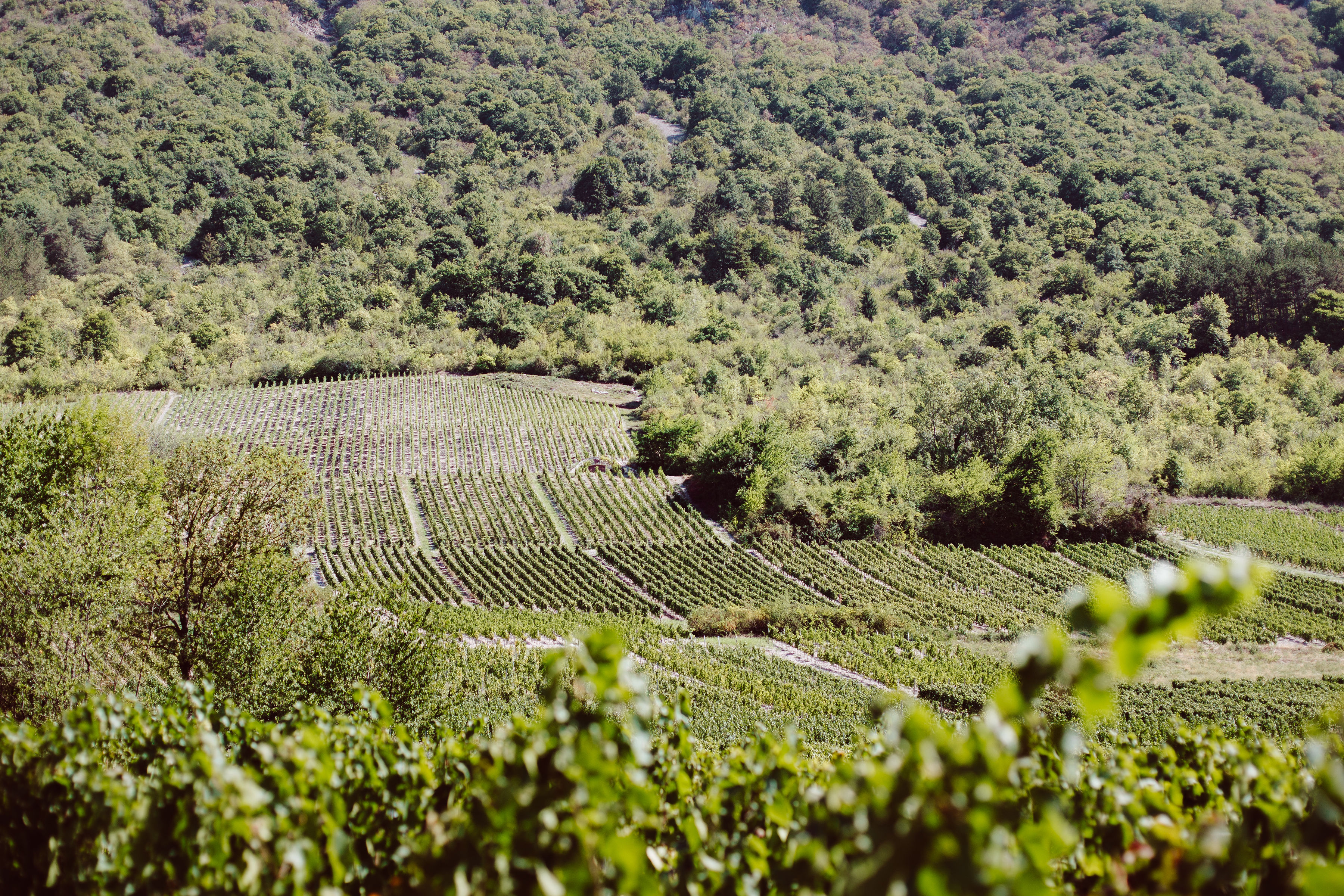Corton Charlemagne Grand Cru AOP

Corton-Charlemagne, a white wine of very high quality
The reputation of the Corton mountain is partly due to this appellation. Shared between the villages of Aloxe-Corton, Pernand-Vergelesses and Ladoix-Serrigny, the AOC Corton-Charlemagne is indeed one of the most sought-after white wines in Burgundy, just like a Montrachet. This wine is also classified as a Grand Cru, the pinnacle of the Burgundy hierarchy. In the Côte d'Or, north of the Côte de Beaune, the Corton-Charlemagne is a more than imperial wine, which gives all its letters of nobility to the Chardonnay grape.
General presentation of the appellation corton-charlemagne
At the northern tip of the Côte de Beaune rises the famous mountain of Corton. On its southern slopes are cultivated some of the most beautiful crus of Burgundy. To the east, the pinot noir gives birth to the Corton appellation, the only red Grand Cru of the Côte de Beaune. To the west, straddling Aloxe-Corton and Pernand-Vergelesses, Chardonnay is at the origin of Corton-Charlemagne, a Grand Cru available exclusively in white and which also includes the wines of the AOC Charlemagne, an appellation which is no longer claimed today.
With a little more than 50 hectares, the vineyard of Corton-Charlemagne represents, with Chablis, the largest classified Grand Cru area in Burgundy. The vines grow on very steep slopes located on the highest part of the Corton mountain, between 280 and 330 metres in altitude.
This prestigious wine-growing hill owes its name to the emperor Otto, Corton being the contraction of "curtis othonis", i.e. the "garden of Otto". Charlemagne, for his part, is said to have decided to have Chardonnay planted in order to drink a wine that would not stain his beard. This imperial past is reflected in a white wine of infinite delicacy, which perfectly sublimates the terroir and the Chardonnay.
Characteristics of Corton-Charlemagne
Corton-Charlemagne has a pale gold colour with delicate green reflections, emblematic of Chardonnay. With age, the wine tends to take on amber hues.
Its aromatic palette is as complex as it is refined. Often honeyed, it offers buttery tones, citrus fruit, pineapple and baked apple aromas. Lime blossom, fern and juniper add a vegetal touch, while cinnamon slightly spices up the bouquet. Flint is also present. On the older vintages (25-30 years), notes of leather and truffle can be detected.
It is a wine that can be kept for a very long time: on average, 5 to 15 years, and more than 20 years for the best vintages. It is recommended to wait at least 5 years before tasting a Corton-Charlemagne.
How to taste a Corton-Charlemagne
The Corton-Charlemagne Grand Cru is a wine of high gastronomy. Powerful and aromatic, it accompanies delicate dishes whose flavours do not mask its delicate bouquet. Thus, Corton-Charlemagne accompanies with great refinement sophisticated dishes that sublimate noble shellfish such as lobster or lobster. This high-flying white wine also accompanies delicate dishes that feature truffles, fine fish such as monkfish or turbot, Bresse poultry, capon, sweetbreads, etc.
This white wine is best served at a temperature of 12-14°.
Laissez-vous tenter... par les autres appellations !
Le vignoble

